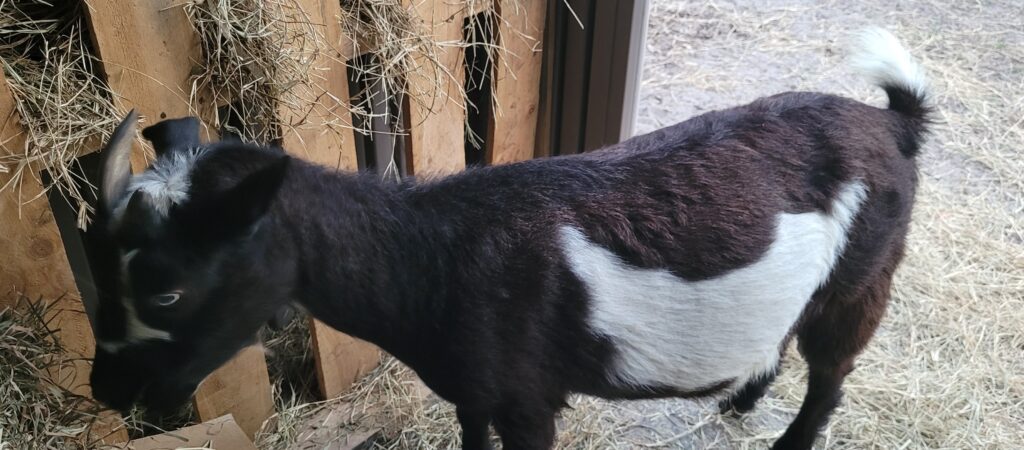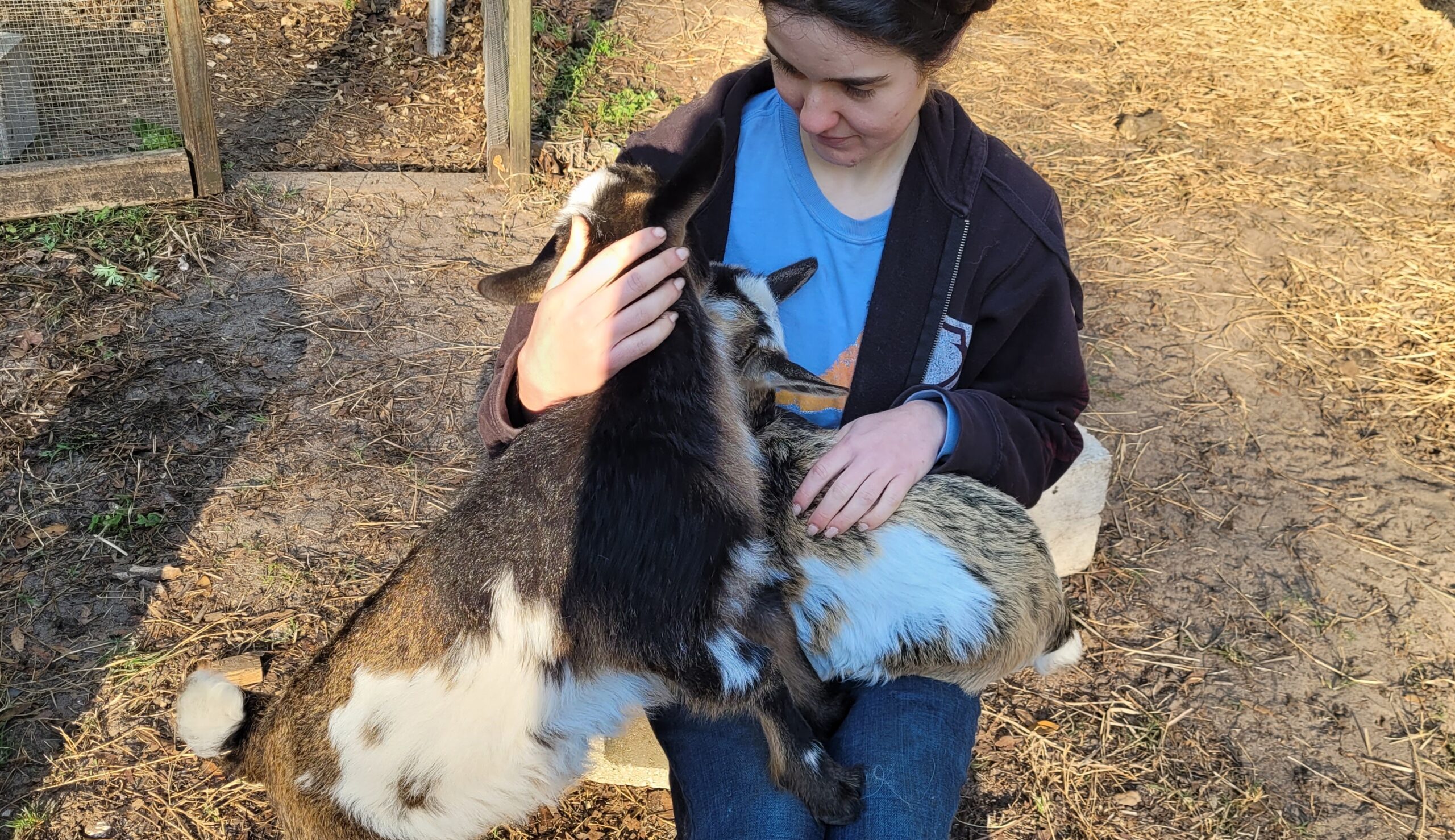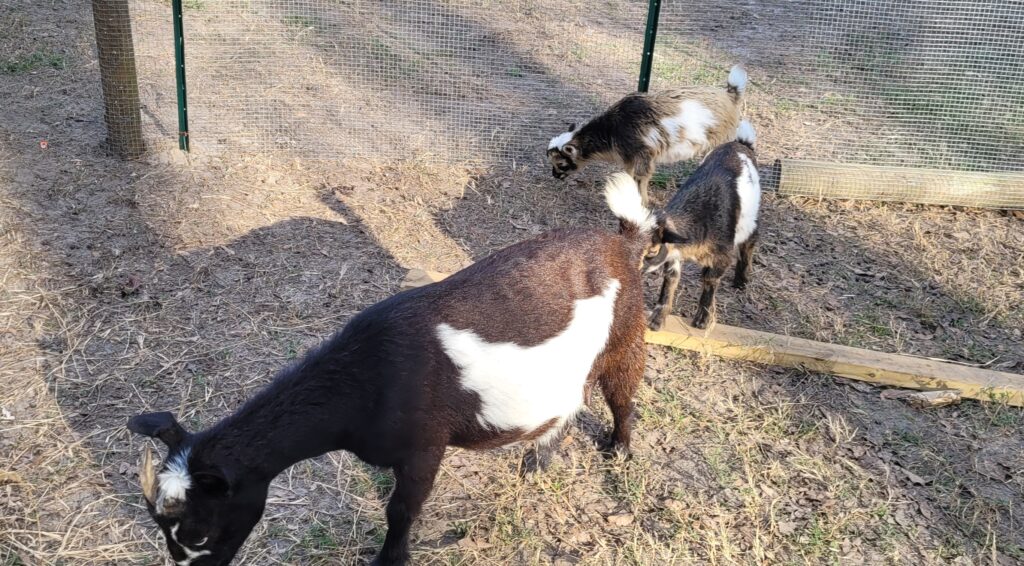Less than two weeks ago, The Silly Couple brought three goats to the homestead. This includes our herd queen Delilah and her two doelings, Isabella and Gabriella. While there’s no denying how entertaining these girls can all be, the real reason we got them wasn’t just to have more pets. Instead, we’re interested in milking Nigerian dwarf goats.
If you’ve never milked any animal before, we’ll tell you up-front: it’s not as easy as it looks. And, if you’ve never milked a Nigerian dwarf in particular, their smaller size can definitely make for a unique challenge. Today, we’re going to consider our progress so far and talk about how you can get better at milking Nigerian dwarf goats.
How Much Can A Nigerian Dwarf Goat Produce?
There are a variety of great reasons to consider these goats over other dairy goat breeds. However, one of the main reason Nigerian Dwarf goats are so popular is the relatively large amount of milk they produce. It’s not uncommon for does to lactate more than 9 months, with a confirmed instance of 305 days of total lactation. This means getting 10 months worth of milk from one doe is to be expected.
Beyond the long lactation window, milking Nigerian Dwarf goats can produce one to two quarts of milk each day (2-4 pounds). Spread out over the course of a year, the full yield of an average doe in milk is expected to be 750 pounds (just shy of 94 gallons). We don’t know about you, but at our homestead, that’s quite a lot of milk in one year. In other words, we look forward to the goat cheese we’ll be making!
How Is Delilah on the Milking Stand?

Getting that much milk is great on paper, but how have we done with milking Nigerian dwarf goats? Since Delilah is our only goat in milk right now, we don’t have a lot to work with. But, we’ve gotten a lot better from the time we got her to today. In fact, we were milking so slowly that the first week we never really broke double digits (so, less than 10 ounces).
Fortunately, we’ve gotten the hang of things a bit better and are consistently able to get around 13-14 ounces each morning. Now, before you raise your nose at us, let’s consider this. We’re milking only once each day because we are not forcing the doelings to ween off their mother yet. So, while we expect to push up our production over the next couple weeks, we’re not looking to milk Delilah dry just yet. Her babies need to eat after all, which leads us to our next topic.
Feeding the Little Goats

When it comes to milking Nigerian dwarf goats, the key is to finish milking before they finish eating. And, that’s why our biggest struggle right now is simply to get faster. Our first attempts at milking Delilah didn’t go so smoothly for a plethora of reasons, but undoubtedly our lack of proper feeding was number one. Like the noobs we were, we decided to try to milk her by just feeding her daily grain ration. And, even if we were the fastest milkers on earth, there’s no way that would stretch enough to finish milking her.
Instead, we started adding alfalfa pellets along with the morning grain ration. This way, she has more to eat without loading her up with too much grain. Our hope is that as we get faster at milking, we’ll continue to squeeze out a little bit more over the coming weeks. But, as mentioned before, we don’t want it all.
See, when we brought Delilah home, we were told she could produce a full quart. And, we believe it. 32-14=18. Simple math, right? Well, as the doelings approach 8 weeks of age (and until they hit that 12 week range), we are slowly introducing grain rations into their diet. We’re also encouraging them to continue feeding off their mother. And, for two doelings, 18 ounces is probably not enough food. So, it’s fortunate we are giving them grain too!
All this to point out…while we might just be counting 13-14 ounces right now, we not only expect to push this number higher, but we also would need to bottle feed the babies if we got too much more. So, we’re happy for now to let the doelings eat milk right from the source and stick with milking just once a day.
Milking Nigerian Dwarf Goats Fast

Of course, while Delilah is our only milking goat right now, we don’t plan to keep it that way. In fact, when the time comes, we plan to spread out our kidding season between Delilah and her two kids. If we can get Delilah pregnant and then have Gabriella and Isabella follow up over the next two to three months, that should get us into a solid schedule so we’re never without fresh milk on the homestead. And, since both Gabriella and Isabella come from a proven, high-producing breeding line, we expect they and their children should give us a higher yield than the estimated quart we can get from Delilah.
With all things considered, we think we’re at a pretty good spot when it comes to milking Nigerian Dwarf goats. Our goal over the next month is to move towards the end of March and get between 16-20 ounces each morning. This way, we’re getting a steady flow while still leaving some for the babies as they ween.
Come April, we can then look at managing it so we can milk every 12 hours instead of just every morning. This way, we can see if that quart a day becomes a reality. Even if not, we couldn’t be happier with our progress and know this is just the beginning of our journey in milking Nigerian dwarf goats. Until next time, we’ll see you around the homestead.


Wow! We have always wanted a goat farm! I am so glad to see you too enjoying your new life together! Your mother just told me about your blog yesterday and I am having a wonderful Saturday morning reading all of your articles!